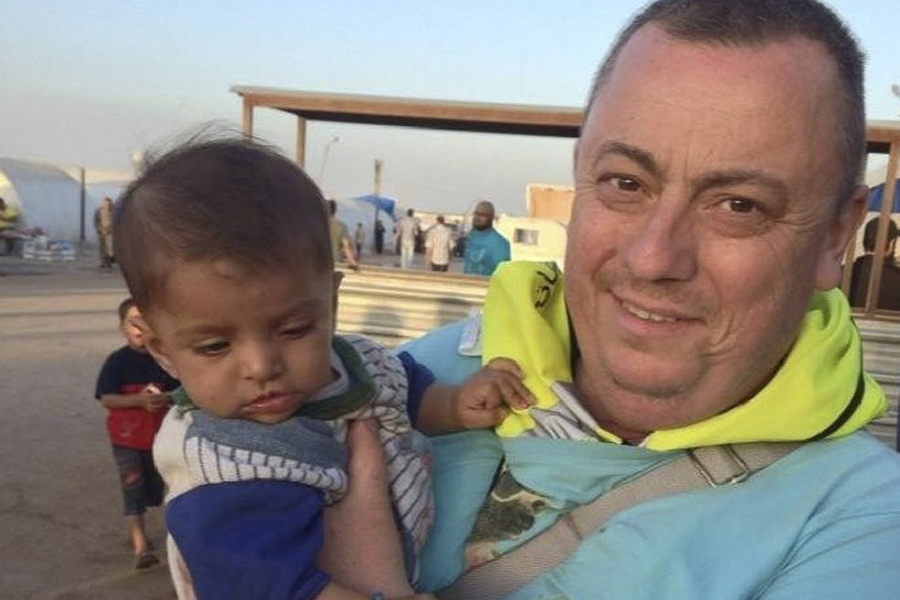Islamic State fighter purportedly beheads Briton Alan Henning in propaganda video
Loading...
| CAIRO
An Internet video released Friday purports to show an Islamic State group fighter beheading British hostage Alan Henning and threatening yet another American captive, the fourth such killing carried out by the extremist group now targeted in U.S.-led airstrikes.
The video mirrored other beheading videos shot by the Islamic State group, which now holds territory along the border of Syria and Iraq. It ended with an Islamic State fighter threatening a man they identified as an American named Peter Kassig.
"Obama, you have started your aerial bombardment of Shams (Syria), which keeps on striking our people, so it is only right that we continue to strike the neck of your people," the masked militant said.
The Associated Press could not immediately verify the video's authenticity, though it was released in the same manner as other Islamic State group videos and the masked militant sounded similar to the one who carried out the other slayings.
The British Foreign Office had no immediate comment. A U.S. official, who spoke on condition of anonymity out of concerns of not having permission to release the information, confirmed that Peter Kassig is being held by Islamic State militants. The official declined to elaborate.
This is the fourth such video released by the Islamic State group. The full beheadings are not shown in the videos, but the British-accented, English-speaking militant holds a long knife and appears to begin cutting the three men, American reporters James Foley and Steven Sotloff and British aid worker David Haines.
Henning, 47, nicknamed "Gadget," had joined an aid convoy and was taken captive on Dec. 26, shortly after crossing the border between Turkey and Syria. Earlier this week, Henning's wife Barbara Henning asked the militants in a televised plea: "Please release him. We need him back home."
Dozens of Muslim leaders in Britain have urged the Islamic State group to release Alan Henning. His wife had said she had been given hope by "the outcry across the world" over her husband's imprisonment.
The Islamic State group has its roots in al-Qaida's Iraqi affiliate but was expelled from the global terror network over its brutal tactics and refusal to obey orders to confine its activities to Iraq. It metamorphisized amid the bloody 3-year civil war in neighboring Syria, growing stronger to the point of being able to launch a lightning offensive across much of northern Iraq, routing security forces there.
The extremist group has been widely denounced by mainstream Muslim authorities.
Other foreigners are believed held by the Islamic State group. On Friday, the father of John Cantlie, a British photojournalist held by the group, appealed for his release in a video, saying he was a friend of Syria.







